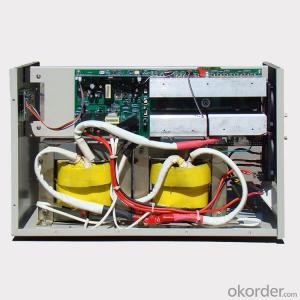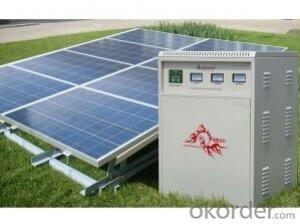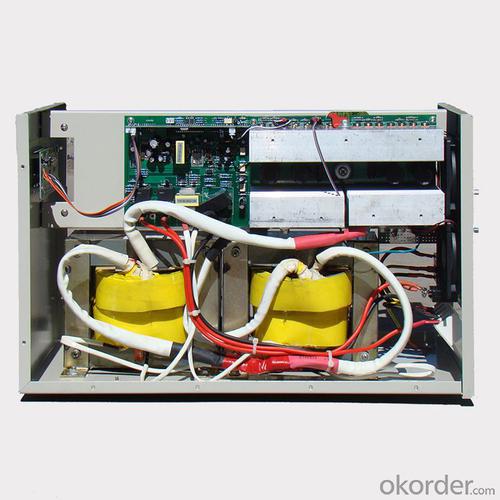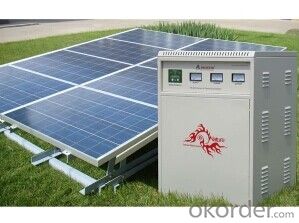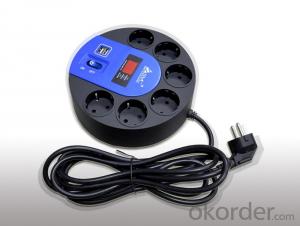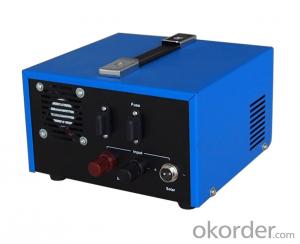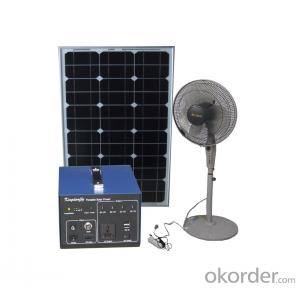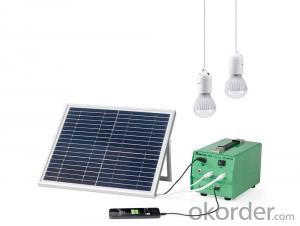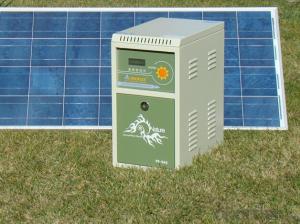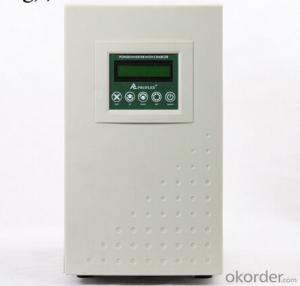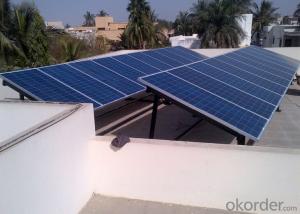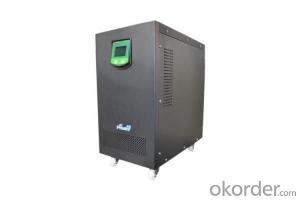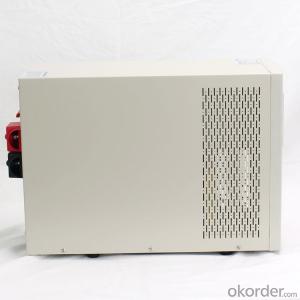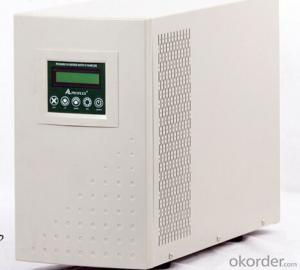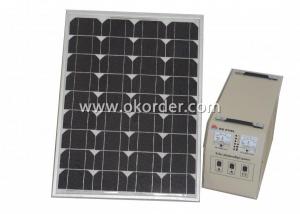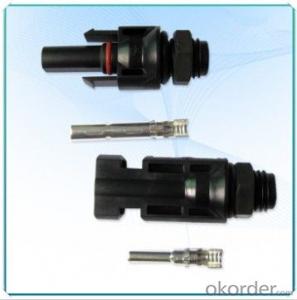Montana Solar Energy Systems - Off Grid Solar Power System PR-SAS3000 with Battery Tank 2400W
- Loading Port:
- Tianjin
- Payment Terms:
- TT OR LC
- Min Order Qty:
- 10 pc
- Supply Capability:
- 10000 pc/month
OKorder Service Pledge
OKorder Financial Service
You Might Also Like
Specification
Specifications
1.Supply 2 work modes: to save electricity bill or to supply long time power backup.
2. Supply battery tank,high integrated.
AC solar power system consists of solar batteries, solar controller, battery, inverter components.
Used to solve rural or remote areas without electricity, such as highland, island, pastoral, villas, border posts and other military and civilian life electricity.
Warranty
CNBM Solar panel provides one of the most comprehensive module warranties in the industry:
· 10 years for product defects in materials and workmanship
· First 12 years for 90% of warranted minimum power
· Remaining 25 years for 80% of warranted minimum power
Certification
CNBM Solar panel strictly carries out the ISO 9001 quality control methodology and has implemented check points at every step of the production process to ensure our product performance durability and safety. The stringent quality control process has been confirmed by numerous independent agencies and LDK Solar modules earned IEC, TUV and UL certifications.
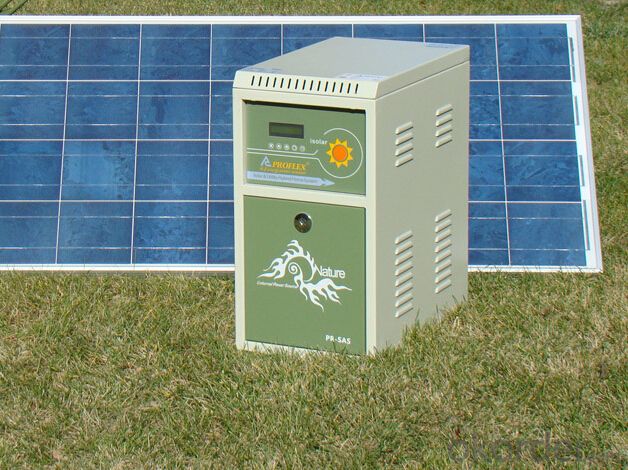
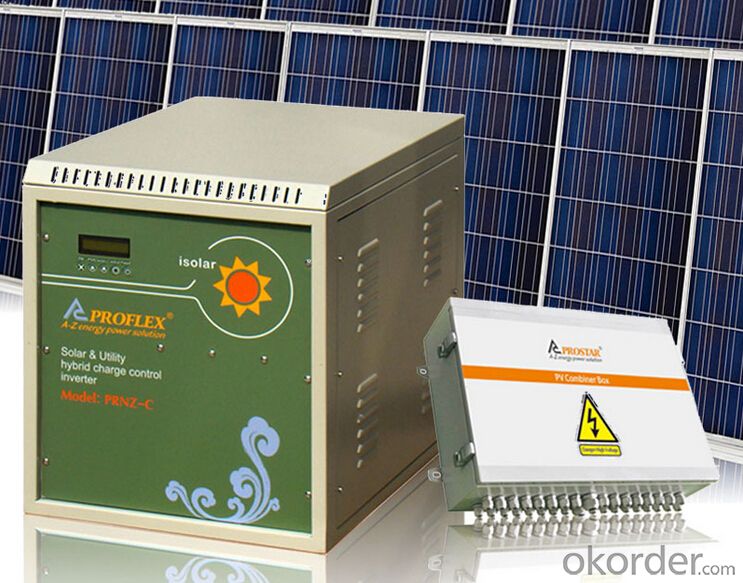
FAQ
l Where can I buy your products?
You could find our products from dealers or contact our sales team directly. We will provide you with detailed services.
l How to contact us?
Contact details can be found from website www.okorder.com to contact us. We look forward to providing you with professional services.
l What is the application field of your products?
They can be used in the small photovoltaic (PV) grid power generation systems of family units as well as the commercial photovoltaic system such as BIPV, BAPV and etc.
l What kinds of modules do your inventers support?
Our inventers support most of mainstream components and modules in the market. Should you require more details, please do not hesitate to contact our technical personnel.
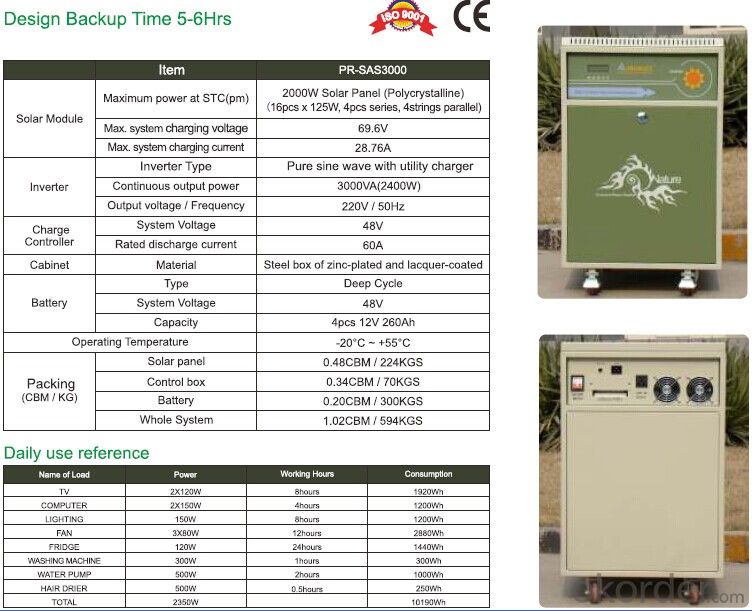
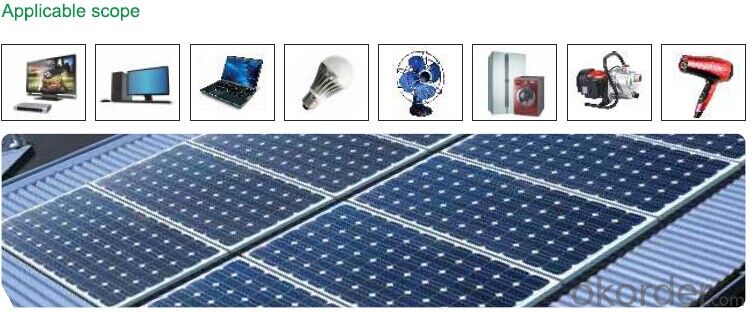

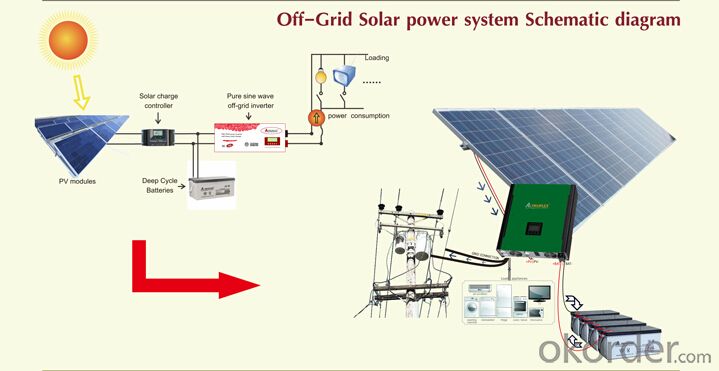
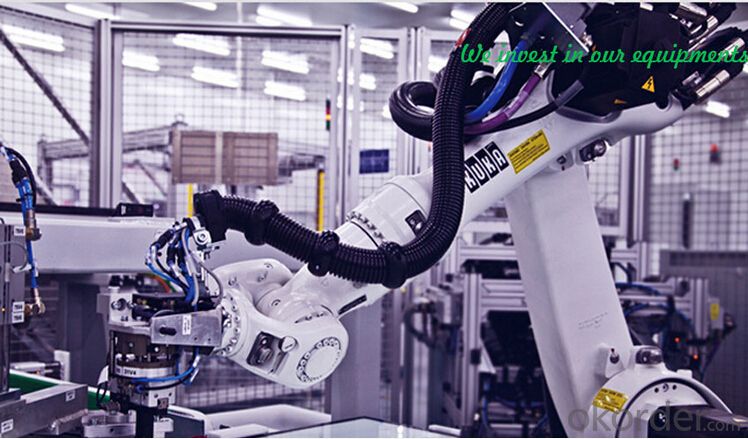
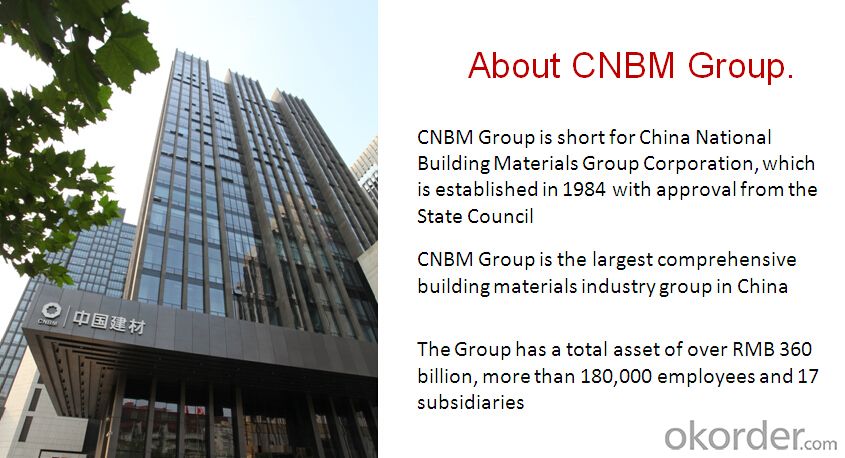
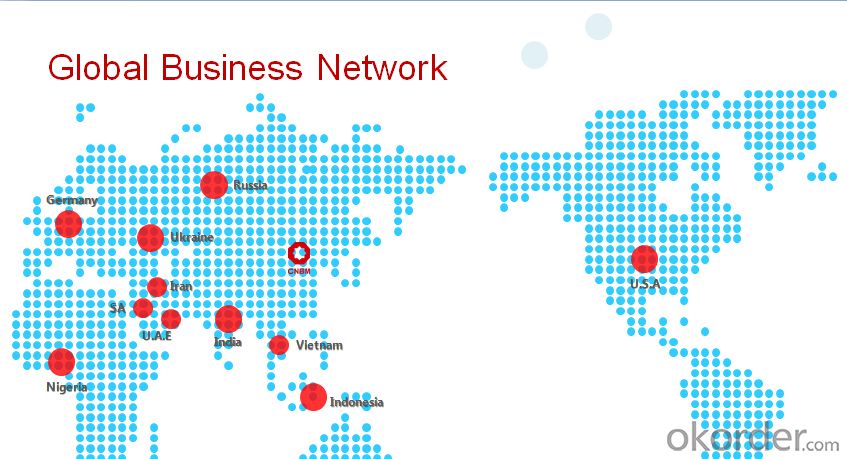
- Q: Can solar energy systems be used for powering drones?
- Yes, solar energy systems can be used for powering drones. Solar panels can be installed on the surface of drones to capture sunlight and convert it into electrical energy, which can then be used to power the drone's motors and other electronic components. This allows drones to have extended flight times and reduces the dependence on traditional battery power.
- Q: How do solar energy systems impact water usage?
- The utilization of solar energy systems greatly reduces water usage in comparison to traditional fossil fuel power plants, leading to a positive impact. Solar power operates without the need for water, whereas conventional power plants consume large quantities of water for cooling purposes. This excessive water consumption can be harmful to local ecosystems and water resources, particularly in regions with limited water availability. Furthermore, solar energy systems indirectly aid in water conservation by decreasing the dependence on other energy sources that require significant amounts of water. By transitioning to solar power, the necessity for coal or natural gas power plants, which consume vast quantities of water for cooling and extraction processes, can be reduced. This reduction in water usage not only helps preserve local water resources but also addresses water scarcity concerns faced by many areas. Moreover, solar energy systems can be integrated with water management infrastructure to optimize water usage. For example, solar panels can be installed on reservoirs or other bodies of water, providing shade and reducing evaporation rates. This aids in water conservation and the maintenance of reservoir levels, which are essential for agriculture, drinking water supply, and ecosystem well-being. In conclusion, solar energy systems have a positive impact on water usage by eliminating the need for water consumption in electricity generation and reducing reliance on water-intensive energy sources. Additionally, solar power can be combined with water management infrastructure to optimize water usage and conserve water resources. Embracing solar energy allows us to contribute to a more sustainable and water-efficient future.
- Q: What is the impact of electromagnetic interference on solar energy system performance?
- Electromagnetic interference can have a detrimental impact on the performance of a solar energy system. It can disrupt the flow of electricity, causing fluctuations in voltage and current. This interference can lead to decreased efficiency and reduced power output of the solar panels. In extreme cases, it can even cause complete system failure. Therefore, mitigating electromagnetic interference is crucial to ensure optimal performance and reliability of solar energy systems.
- Q: Is it possible to store excess electricity generated by a solar energy system?
- Excess electricity generated by a solar energy system can indeed be stored. One way to do this is by using batteries, which are commonly employed for this purpose. Battery banks can be integrated into solar energy systems to store surplus electricity produced during the day, allowing it to be utilized at night or during periods of low sunlight. By charging and discharging as necessary, these batteries ensure a consistent and dependable power supply, even in the absence of sunlight. Another means of storing excess electricity is through grid-tied systems. In this configuration, any surplus power generated by the solar energy system is fed back into the electrical grid. The excess electricity is then credited to the homeowner's account, enabling them to draw power from the grid during times when their solar panels are unable to generate enough energy, such as at night or on cloudy days. Both battery storage systems and grid-tied systems offer effective solutions for storing and utilizing surplus electricity generated by solar energy systems. These methods ensure that no energy is wasted and enable homeowners to enjoy a reliable and uninterrupted power supply.
- Q: What are the benefits of installing a solar energy system?
- There are numerous advantages to installing a solar energy system that make it an appealing choice for individuals, businesses, and communities. Firstly, solar energy is a sustainable and renewable source of power. Unlike finite fossil fuels that harm the environment, solar energy utilizes the power of the sun, which will continue to shine for billions of years. A key benefit of solar energy is its ability to reduce electricity bills. By generating your own power, you can significantly decrease or even eliminate your reliance on grid electricity, resulting in substantial long-term savings. Additionally, solar panels have a lengthy lifespan of 25 to 30 years, meaning you can enjoy these cost savings for many decades. Solar energy not only saves money but also provides stable and predictable energy costs. As utility prices fluctuate due to various factors, solar energy allows you to fix your electricity costs and protect yourself from future price increases. This stability is especially advantageous for businesses and organizations that need to effectively manage their budgets. Installing a solar energy system also contributes to reducing carbon emissions and combating climate change. Solar power is a clean and environmentally friendly energy source that produces no greenhouse gases or air pollutants during operation. By transitioning to solar energy, you can reduce your carbon footprint and promote a cleaner and healthier environment for future generations. Furthermore, solar energy systems require minimal maintenance. Once installed, solar panels generally only need occasional cleaning and inspections, making them a hassle-free and low-maintenance energy solution. They also provide energy independence, enabling you to generate your own power and become less dependent on external energy sources. In addition to these benefits, the installation of solar energy systems can also lead to job creation and economic growth. The solar industry is rapidly expanding, creating new employment opportunities and contributing to local economies. Investing in solar energy not only benefits the environment but also stimulates economic development and supports the growth of a sustainable and resilient energy sector. Overall, the advantages of installing a solar energy system are extensive and diverse. From cost savings and energy independence to environmental sustainability and job creation, solar power offers a compelling solution for a brighter and more sustainable future.
- Q: Can solar energy systems be used in areas prone to hurricanes or tornadoes?
- Yes, solar energy systems can be used in areas prone to hurricanes or tornadoes. While extreme weather events like hurricanes and tornadoes can potentially damage solar panels, advancements in technology and installation practices have made solar systems more resilient and able to withstand such conditions. For instance, solar panels are designed and tested to withstand high wind speeds and impact from debris. Additionally, proper installation techniques, such as using reinforced mounting systems and ensuring secure attachment to roofs or the ground, can further enhance their resistance. Therefore, while precautions need to be taken, solar energy systems can still be a viable and sustainable option in areas prone to hurricanes or tornadoes.
- Q: How do solar energy systems contribute to energy independence?
- Solar energy systems contribute to energy independence by harnessing the power of the sun to generate electricity. By utilizing renewable energy sources, such as solar panels, we reduce our reliance on fossil fuels and foreign oil. This, in turn, decreases our vulnerability to fluctuations in oil prices and geopolitical tensions. Solar energy systems empower individuals, businesses, and even entire communities to generate their own clean and sustainable energy, reducing their dependence on the traditional energy grid and promoting self-sufficiency.
- Q: Can solar energy systems be connected to the existing power grid?
- Yes, solar energy systems can be connected to the existing power grid. This is known as grid-tied or grid-connected solar systems. In this setup, solar panels generate electricity from sunlight, which is then converted into usable AC power by inverters. This AC power is then fed into the existing power grid, supplementing the electricity supply from the utility company. Grid-tied solar systems offer several advantages. Firstly, they allow homeowners and businesses to reduce their reliance on fossil fuel-based electricity and lower their carbon footprint. Additionally, excess electricity generated by the solar panels can be sent back to the grid, resulting in net metering or feed-in tariffs, where the utility company credits the system owner for the excess power. This can lead to significant cost savings or even revenue generation. Furthermore, grid-tied systems provide a reliable and stable electricity supply. During times when the solar panels are not generating enough power, such as at night or during cloudy weather, electricity can be drawn from the grid. Conversely, when the panels produce more electricity than is being used, the excess is sent back to the grid, ensuring a continuous and uninterrupted power supply. It's important to note that the installation and connection of grid-tied solar systems may require the approval and coordination of the local utility company, as well as compliance with relevant regulations and safety standards. However, overall, the ability to connect solar energy systems to the existing power grid makes them a versatile and beneficial renewable energy solution.
- Q: Can solar energy systems be installed on flat roofs?
- Yes, solar energy systems can be installed on flat roofs. However, the installation process and design considerations may be different compared to pitched or sloped roofs.
- Q: Are there any risks of electrical overloading with solar energy systems?
- Yes, there are some risks of electrical overloading with solar energy systems. One of the main factors that can lead to overloading is the mismatch between the capacity of the solar panels and the electrical load. If the solar panels generate more electricity than what is being consumed or stored, it can cause an overload in the system. Another risk is that solar energy systems often require inverters to convert the DC power generated by the panels into AC power that can be used in homes or businesses. Inverters have a capacity limit, and if the solar panels produce more electricity than the inverter can handle, it can cause overloading. Additionally, issues with wiring or connection can also lead to overloading. If the wiring is not properly sized or the connections are loose or faulty, it can increase the resistance and cause overheating, which can eventually lead to overloading. To mitigate these risks, it is important to properly size the solar energy system to match the electrical load. This involves considering factors such as the average energy consumption, peak energy demand, and the capacity of the inverter. It is also crucial to ensure that the wiring and connections are done by certified professionals and are regularly inspected for any signs of wear or damage. Moreover, safety mechanisms such as circuit breakers and surge protectors should be installed to prevent overloading and protect the solar energy system from any potential damage. Regular maintenance and monitoring of the system can also help identify any issues early on and prevent overloading.
Send your message to us
Montana Solar Energy Systems - Off Grid Solar Power System PR-SAS3000 with Battery Tank 2400W
- Loading Port:
- Tianjin
- Payment Terms:
- TT OR LC
- Min Order Qty:
- 10 pc
- Supply Capability:
- 10000 pc/month
OKorder Service Pledge
OKorder Financial Service
Similar products
Hot products
Hot Searches
Related keywords
